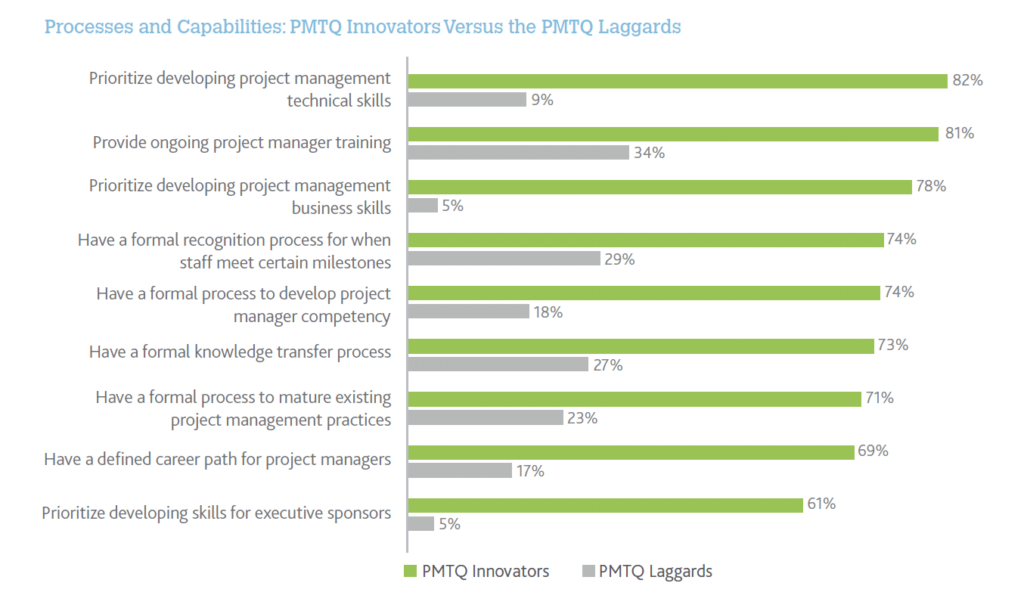March 18, 2020
March 18, 2020
There is more to a project management office than managing projects. In fact, the project management office (PMO) acts as both a watchtower and a lighthouse to guide strategic initiatives toward success and maintain work standards to complete projects.
In The State of the PMO 2016, surveyed executive leaders confessed only 60% of their strategic initiatives met goals. In other words, nearly half of the initiatives that had been formulated were abandoned, didn’t produce the intended outcome, or were never started. Because of this, more companies are implementing a sustainable plan through the creation of a project management office.
The project management office relates to everything about the program and project management. PMOs provide leadership and expertise by promoting standards of excellence and methodologies that ensure programs are delivered on time, on budget, and aligned with the corporate strategic direction.
Examples of PMO areas of intervention include (but are not limited to):
The control a PMO has over projects and project managers depends on the organization’s needs and objectives. Its role can be consultative (offering guidance and guidelines without enforcing them), controlling (ensures adoption and compliance), or directive (taking over project management across all departments). There is not one single PMO architecture that will prove effective for all.
Bonus: See how ProPharma Group fitted a top 25 pharmaceutical with a custom PMO design that streamlines processes and portfolio governance and increased visibility for senior management.
If your organization runs several manufacturing sites, employs thousands of people, and drives multiple programs fails to identify ROI, you should consider program integration and a PMO.
PMOs, however, are not reserved to big corporations. As with every growth initiative, the truth is in the numbers. Here are some questions to ask yourself when determining whether or not you need a PMO:
With a PMO, you can measure each project’s return on investment and progress.
PMO services to align projects with strategy:
With a PMO, you can measure the rate of on-time completion of free-style management vs compliant methodology.
PMO services to improve execution:
You can also assess the volume of documents shared in your knowledge vault. Have past issues been documented and dissected to provide solutions in the future?
PMO services to increase knowledge:
Is this due to insufficiently skilled personnel? Measure the increase in cost of outsourcing project members with a PMO. Conduct a review of your training programs.
PMO services to develop people:
You can also measure the trend in reported issues vs resolved issues. Measure how the health of the portfolio suffers from high-impact/ unsolved issues.
PMO services to mitigate risk:
Organizational change comes with many obstacles, but a project management office can help address some of them. A successful PMO helps define clear goals and mission, fits the company culture and doesn’t try to impose a new one, trains people, adopts a change management approach, and helps employees prepare for improvements in the future.
At ProPharma Group, we have heard clients lament over too many failures of worthy projects because of poor planning and execution before they realized the need for change. Our 20 years of experience in the field has allowed us to acquire the knowledge and expertise necessary to help you move forward and up. Our certified professionals will guide your teams through the process and ensure all is in place for long-term success.
Contact us today to discuss your PMO needs.
August 15, 2021
A Project Management Office ("PMO") can be incredibly advantageous to large companies with many ongoing projects across various job sites. A PMO streamlines project management processes to make a...

June 16, 2020
In the latest PMI report Pulse of the Profession 2020 (2020), 11.4% of surveyed organizations attribute investment waste to poor project performance. What defines project performance and ultimately...